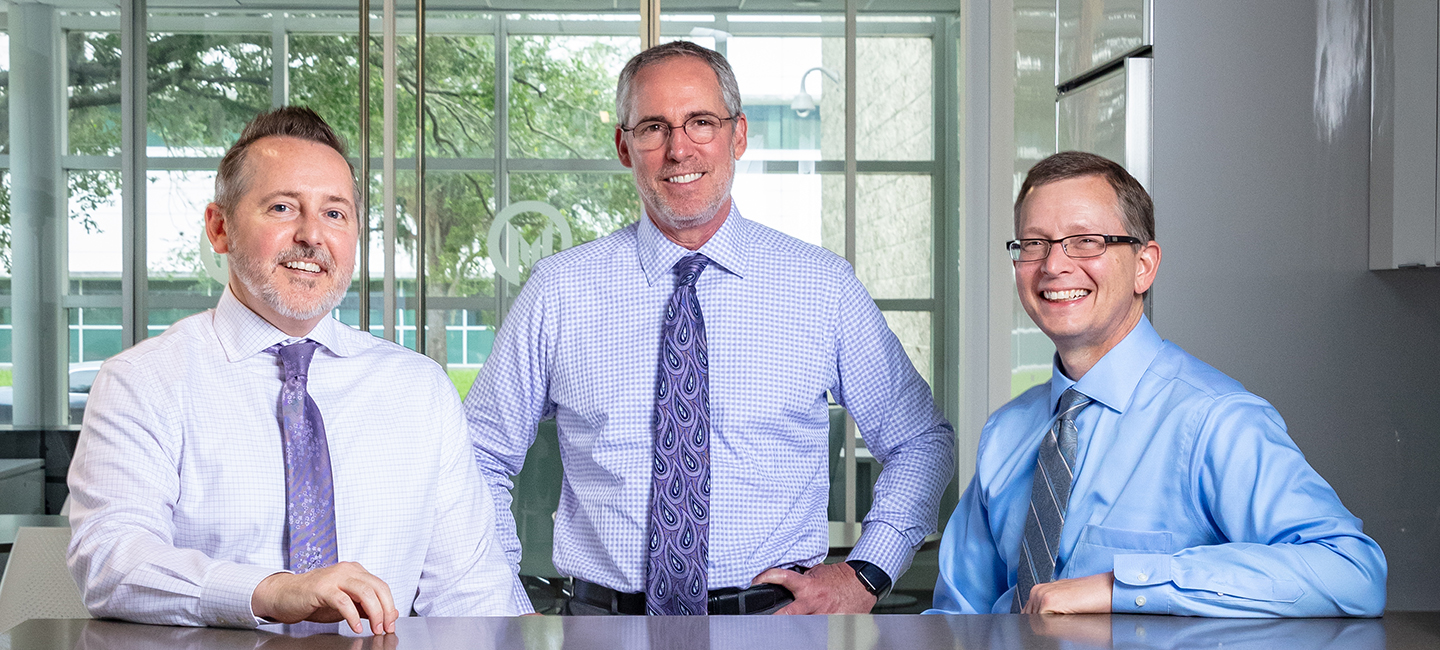More Than a Label
IT’S AN ELITE GROUP.
Only 51 centers nationwide have met the rigorous standards set by the National Cancer Institute (NCI) to be called a Comprehensive Cancer Center. Another 21 cancer centers have successfully achieved NCI designation, but lack the breadth, depth and integration of basic, clinical and population science research to achieve comprehensive status. Moffitt is the only NCI Comprehensive Cancer Center based in Florida.
In this case, comprehensive is a word with very specific meaning. The NCI outlines the attributes required for comprehensive status (language adapted from the NCI website):
Moffitt attained comprehensive status in 2001 at a remarkable pace, just three years after achieving NCI designation and 15 years after first opening its doors. NCI designation confers funding in the form of the Cancer Center Support Grant, or CCSG. Contrary to what one might think, the CCSG is not a largesse that underwrites all the work being done by Moffitt researchers. Far from it: At around $3 million per year for Moffitt, CCSG dollars only partially support the structure needed to create the collaborative environment where great cancer research can take place. The faculty must still compete for external grant monies to cover their salary, hire staff, purchase supplies, and pay for use of the shared resources. But designation conveys a level of credibility that far exceeds the monetary value.
Tom Sellers, PhD, MPH, Moffitt’s center director and executive vice president, says most of the money goes to support shared resources called core facilities. Sellers, who also serves as principal investigator for Moffitt’s CCSG grant, explains that these provide access to high-tech instruments and experts crucial to success in the competitive world of cancer research. “It’s beyond the means of any single researcher to afford, so we pool our pennies and then everybody gets access to the equipment or that expertise.”
In addition to cores, a substantial component of CCSG funds is devoted to clinical research activities, such as management of the 240+ members of the team, scientific review processes and quality review infrastructure.
Top-notch research requires faculty leadership to coordinate collaborative team science. Some of the CCSG dollars provide protected time for faculty outside of their laboratory or clinic to facilitate research program activities that lead to world-class innovative science. The remaining CCSG funds support continuous review and evaluation processes, and developmental funds for pilot research projects, recruiting new investigators or developing new shared resources.
Once attained, NCI comprehensive status and CCSG dollars are not assured permanently. At least every five years, centers must apply to renew their grant and status. “This is not a popularity contest,” explains Sellers. “This is a formal, written, peer-reviewed grant application that is very data-driven, followed by an intensive in-person review by a site visit team.”
It’s also one with real consequences. Designation and CCSG dollars can disappear with an unsuccessful effort. With renewal, the strength of a center’s research effort is reaffirmed. “It perpetuates a path of success in science,” Sellers adds, as the majority of the federal budget that funds cancer research studies goes to NCI-designated and/or Comprehensive Cancer Centers. “Having NCI designation means we’re doing relevant, impactful research, and we’re attracting the best talent in many roles throughout the organization to make it successful.”
Moffitt’s last application, filed in 2016, weighed in at over 2,100 pages. NCI-selected experts in the types of research conducted at Moffitt spent one day on campus reviewing core facilities, research programs, administration and leadership. It’s a tight schedule, says Brian Springer, MHA, vice president and associate center director of Research Administration. Each research program typically gets just 10 minutes to tell its story. “That may be the life’s work of 25 people in the program,” Springer explains. “Imagine assembling all they’re doing into a 10-minute talk or 12 pages of a report. If you don’t get the point across, you can wind up not being evaluated as highly as you’d hoped.”
When it comes to the CCSG, the quality of patient care is not directly reviewed. “The evaluation is solely based on the scientific impact,” says Lowell Smith, MA, senior director of Research Administration for Moffitt’s CCSG. “Clinical activities and care are not directly evaluated, except for clinical research activity that is considered the gold standard for the most advanced care. However, indirectly, it’s been shown through outcome data and other statistics that patient care is better at designated centers. Quality research means better outcomes.”
“It’s really 6,500 Moffitt team members doing things every day that translate into the grant, because research is part of our DNA.”
Susan Vadaparampil, PhD, MPH, Moffitt associate center director of Community Outreach, Engagement & Equity, says our patients contribute to our research mission in several ways. “Some participate in research studies aimed at improving cancer prevention, treatment and survivorship,” she says. “Others participate in advisory panels, support groups and forums that allow researchers to quickly connect with the patient and their experiences and infuse those perspectives into research. These contributions add to the synergistic relationship between Moffitt’s quality cancer care and its innovative research.”
And in that way, says Springer, Moffitt’s CCSG is not just a research effort. “It’s really 6,500 Moffitt team members doing things every day that translate into the grant, because research is part of our DNA.”
“We all contribute, directly or indirectly, whether we realize it or not,” adds Sellers. “If the invoices don’t get filed for the clinical trials or the equipment isn’t ready to see the patients or there’s not a margin on the hospital’s bottom line — all of that impacts our ability to do world-class research.
“Every single one of us contributes to the research success here. Every single person, no matter what they do.”


